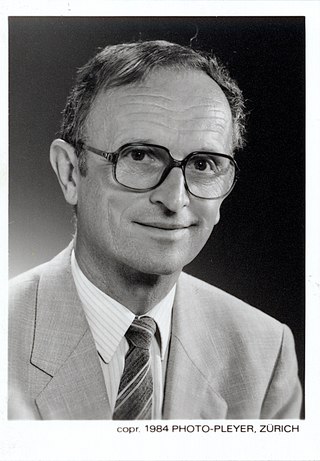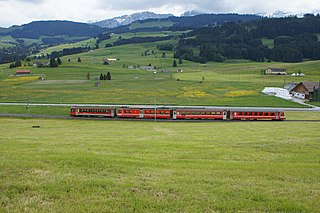There was significant emigration of Swiss people to the Russian Empire from the late 17th to the late 19th century. Rauber (1985) estimates that a number of 50,000 to 60,000 Swiss lived in Russia between roughly 1700 and 1917.
The late 18th and early 19th century saw a flow of Swiss farmers forming colonies such as Şaba (Bessarabia, at the Dniester Liman, now part of Ukraine), besides specialists of various professions, working as winemakers, cheesemakers, merchants, officers or governesses. The Russian-Swiss generally prospered, partly merging with German diaspora populations. Early Swiss emigrants to Russia were not poor, but brought money with them, establishing themselves as specialist elites, choosing Russia as migration target because it offered greater opportunities for their trades than America. Only in the later 19th century, with Russian industrialization, saw significant migration of lower social classes.
Most of these Swiss diaspora populations returned to Switzerland during the interwar period in the wake of the Russian Revolution of 1917, and especially as a result of the Dekulakization under Joseph Stalin during 1929-1931.
The most famous Swiss to have lived in Russia are probably the mathematician Leonhard Euler and the military officer Franz Lefort, a close associate of Peter the Great. Lefortovo district in modern Moscow still bears his name. Other notable Russian-Swiss include botanist Johannes Ammann, artist and architect Leonhard Christian Gottlieb Leonardowitsch Schaufelberger, entrepreneur Arnold Schaufelberger, politician Frederic Cesar de la Harpe and general Antoine Henri Jomini in the tsarist period and Fritz Platten and Jules Humbert-Droz in the Soviet period. In 1918, Platten saved Vladimir Lenin's life in St. Petersburg, and in 1923, a Russian-Swiss assassinated Bolshevik leader Vatslav Vorovskii in Lausanne.
The Swiss-Russian connection went both ways, and Switzerland was a destination for holidays, studies and exile for Bolsheviks and anti-Bolsheviks alike. Notably, Zürich played host to both Lenin and Aleksandr Solzhenitsyn, and in the years predating the Revolution, up to a third of students at Swiss universities were citizens of Tsarist Russia.
Since 1978, the History Department at the University of Zürich under Carsten Goehrke has been assembling an archive of historical documents relating to Swiss emigrants in Russia (now accessible at the Swiss Social Archives, Zurich). [1] The archive collects records of some 5,600 individuals who had come to Switzerland following the collapse of the tsarist state claiming Swiss citizenship, estimated to correspond to about two thirds of the total number.
Since the 2000s, there is a renewed limited trend of Swiss farmers emigrating to Russia. [2] In 2006, there was a number of 676 Swiss citizens registered to permanently reside in Russia, or 100 more than in the preceding year.

Leonhard Ragaz was a Swiss Reformed theologian and, with Hermann Kutter, one of the founders of religious socialism in Switzerland. He was influenced by Christoph Blumhardt. He was married to the feminist and peace activist Clara Ragaz-Nadig.

Mario Pasquale Comensoli was a Swiss painter. He is considered as leading figure of the realist movement, depicting the social evolution of post-World War II Switzerland with key themes ranging from Italian immigrants to the 1968 social unrest, the Disco years and the hopelessness of the 'No Future' youth.
Swiss Standard German, or Swiss High German, referred to by the Swiss as Schriftdeutsch, or German: Hochdeutsch, is the written form of one of four official languages in Switzerland, besides French, Italian, and Romansh. It is a variety of Standard German, used in the German-speaking part of Switzerland and in Liechtenstein. It is mainly written, and rather less often spoken.

Die Schweizer Familie is an opera by the Austrian composer Joseph Weigl. It takes the form of a Singspiel in three acts. The libretto, by Ignaz Franz Castelli, is based on the vaudeville Pauvre Jacques (1807) by Charles-Augustin de Basson-Pierre, known as Sewrin, and René de Chazet. The opera was first performed at the Theater am Kärntnertor, conducted by the composer, in Vienna on 14 March 1809 and was a great success in German-speaking countries in the early 19th century.

Bruno Alexander Spoerri is a Swiss jazz and electronics musician.

Jakob Stutz (1801–1877) was a Swiss writer.

Thomas Maissen is a professor of modern history at Heidelberg University and co-director of the Cluster of Excellence "Asia and Europe in a Global Context". As of September 2013 he is detached as director of the German Historical Institute in Paris.

Robert Faesi was a Swiss writer and academic concerned with Literature and language

The Predigerkloster was a monastery of the Dominican Order, established around 1234 and abolished in 1524, in the imperial city of Zürich, Switzerland. Its church, the Predigerkirche, is one of the four main churches in Zürich, and was first built in 1231 as a Romanesque church of the then Dominican monastery. In the first half of the 14th century it was converted, the choir between 1308 and 1350 rebuilt, and a for that time unusually high bell tower built, regarded as the highest Gothic edifice in Zürich.
Hans Heinrich Schmid was a Swiss Protestant Reformed theologian, University Professor and University Rector.
The Freethinkers Association of Switzerland (FAS) is a Swiss nonprofit organisation for freethought. It is the result of the merger of several late 19th century and early 20th century local freethinkers associations throughout Switzerland into a national society, currently headquartered in Bern.
Georg Kohler is a Swiss philosopher. He is a professor emeritus of Political Philosophy at University of Zurich. He is also a publicist and an author. He has written books on political philosophy and modern day Swiss politics and also collaborated with other writers including Hermann Lübbe.

Elias Landolt (1926–2013) was a Swiss geobotanist, known for his publications on Switzerland's native flora and Lemnoideae.

The Gossau–Wasserauen railway line is a metre-gauge adhesion railway of the Appenzell Railways. It runs from Gossau via Appenzell to Wasserauen in Switzerland and is given the abbreviation of GAW by the operator. The connection was built and electrified in several stages by different companies and has been operating continuously since 1949.

Hanny Johanna Hermina Thalmann was a Swiss women's rights activist and politician of the Christian Democratic People's Party. She was among the first ten women to seat in the National Council after women's suffrage was introduced in 1971.
The Schweizerische Gesellschaft für Neue Musik is a national section of the International Society for Contemporary Music (ISCM). It is organised as an association and has its legal domicile in Lausanne.
Heiko Haumann is a German historian and retired academic scholar.

Hedy Hahnloser-Bühler was a Swiss painter, craftswoman, art collector and patron of the arts.

Jakob Joseph Matthys was a Catholic priest who served as chaplain in Niederrickenbach for about 15 years and as chaplain in Dallenwil for about 20 years.
Patrick Rohr is a former Swiss TV presenter. He currently is the director of his own communications consulting firm in Zurich and additionally works as a photographer.